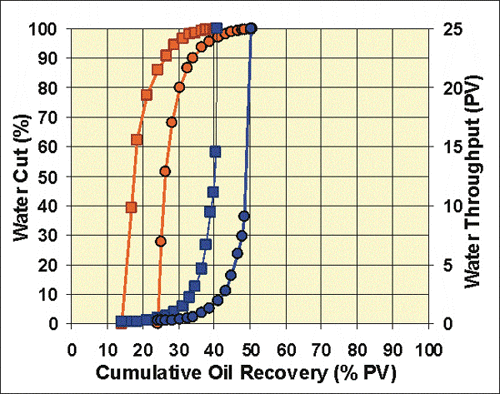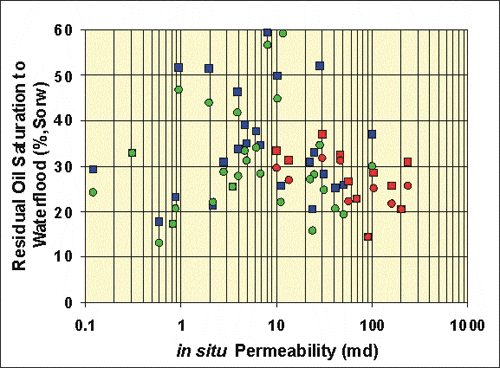
Kansas Geological Survey
Open-file Report 2001-38

|
|
Kansas Geological Survey Open-file Report 2001-38 |

|
Waterflood SusceptibilityCalculated waterflood susceptibility curves exhibit recovery efficiencies ranging from 56.2 to 66.3% of the oil in place (38.5-50.7% of pore space). These recoveries are for samples exhibiting porosities from 24.0 to 25.3%, and permeability from 19.8 to 27.5 md. |

|
Residual Oil Saturation to WaterfloodResidual oil saturation to waterflood (Sorw) is a critical variable for carbon dioxide miscible flooding since this represents the target resource. Though sampling is limited, Sorw may increase then decrease with increasing permeability (k). This trend could result at the high k end from greater pore connectivity. At lower k, the presence of a progressively decreasing oil saturation and higher Swi with decreasing absolute permeability must be associated with decreasing Sorw. There may also be a limited number (and small pore volume fraction) of well connected pores in the lower permeability rock and a large portion in high permeability cores. Intermediate permeability rock could have large pore bodies and smaller pore throats which supports oil-globule snap-off and trapping. |
|
|
e-mail : webadmin@kgs.ku.edu
Last updated December 2001
http://www.kgs.ku.edu/PRS/publication/OFR2001-38/P3-06.html